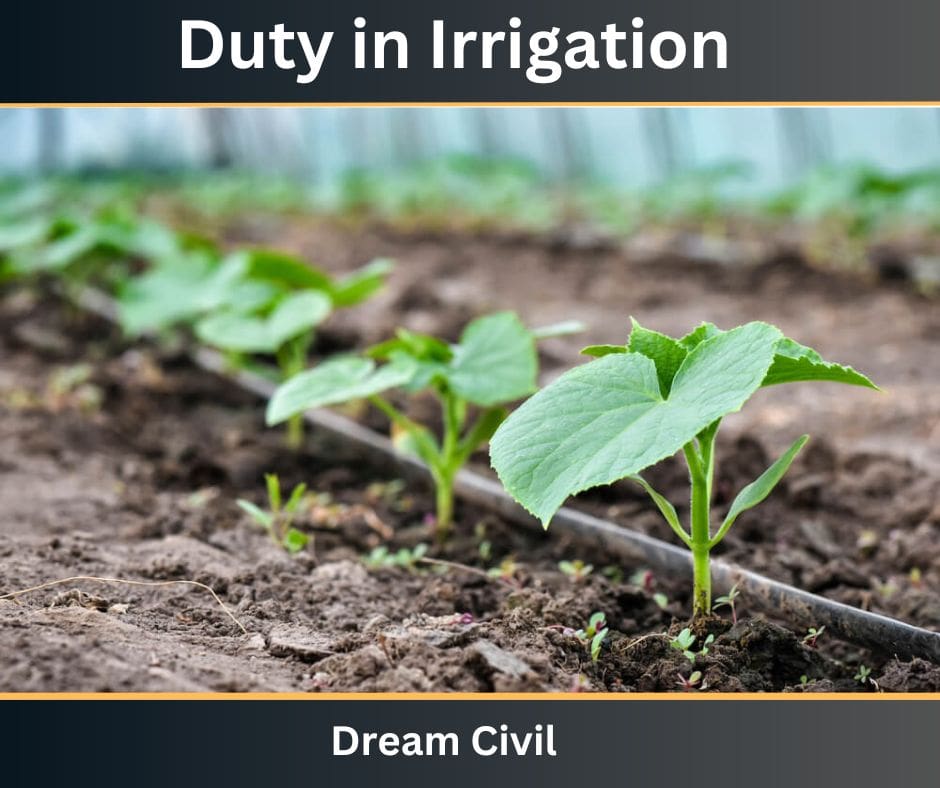Table of Contents
Drip Irrigation is a special type of subsurface irrigation. It is also known as trickle irrigation.
It is the latest field irrigation technique used where there is a scarcity of water with salt problems. This method includes the application of water gently and directly to the root zones of the plants.

A network of valves, pipes, tubing, and emitters is used for distributing water in the drip irrigation system.
The drip irrigation system has high efficiency compared to other types of irrigation systems based on design, installation, maintenance, and operation.
The main goal of a drip irrigation system is to minimize evaporation.
1. Components and Operation of Drip Irrigation
This method of irrigation includes the following components:
a. Pump or pressurized water source
b. Water filter: Sand separator, fertigation system, and chemigation equipment
c. Backwash controller
d. Pressure control valve
e. Distribution lines
f. Hand-operated, electronic or hydraulic control valves and safety valves
g. Smaller diameter polyethylene tube
h. Poly fittings and accessories
i. Emitting devices at plants

∼ The controller ensures the operation of the pump and valves manually.
∼ The filtration system is mostly fitted in the case of large drip irrigation systems which helps to prevent clogging of the small emitter flow path.
Small waterborne particles cause clogging so in order to minimize it, new technologies are being offered. It might not be necessary to provide a filtration system in the residential system where water is already filtered at the water treatment plant.
It is highly recommended to install filters in every drip irrigation system otherwise decreases the warranties of the system and the system may fail early.
Filters are also necessarily applied before the final delivery pipe to reduce the settlement of fine particles and other particles in the intermediate lines.
∼ Recycled municipal wastewater can be utilized for irrigation by the use of drip irrigation techniques. Such types of water are not allowed to spray through the air if not properly treated to potable water standards.
∼ This method of irrigation system often mixes liquid fertilizers with the irrigation water which is also called fertigation.
This chemical fertilizer can be periodically added whenever irrigation is practiced.
From the field test, it has been concluded that drip fertigation is more effective compared to time-release fertilizer.
Drip fertigation saves fertilizer up to 95% and delivers water slowly as compared to time-release.
∼ Water conservation can be achieved by designing, installing, and managing drip irrigation properly.
The drip irrigation system is more advantageous in the area where there is a scarcity of water and no water for savings.
This method increases production using the same amount of water as before. The irrigation water is applied slowly in sandy soils.
∼ Also, pulsed irrigation can be used to reduce runoff or deep percolation by decreasing the amount of water supplied to the plant at any time.
Since it is extremely expensive and often requires high maintenance, it is less practicable.
Therefore, new technologies are developed which deliver water at ultra-low flow rates i.e. less than 1 L/hr.
∼ An emitting pipe consists of emitters pre-installed at the manufacturing factory with a specific distance and flow per hour or per crop distance.
The emitter creates head loss by restricting the flow of water through it and this head loss is achieved by friction within the emitter.
2. Features of Drip Irrigation
a. Head tank maintains the pressure.
b. Main and secondary lines are prepared using PVC pipes.
c. Lateral lines: 10-20 mm in diameter.
d. Discharge through the nozzle is 2 to 10 lit/hr.
3. Suitability of Drip Irrigation
This method is suitable for any topography.
It is suitable in an area where there is a scarcity of water.
It is also used in farms, residential gardens, etc.

a. Suitable Crop:
It is suitable for vegetables, soft fruits, trees, and vine crops.
Generally, it is used for irrigating high-value crops because it requires high capital for installing drip irrigation.
b. Suitable Slope:
It is suitable for any farmable slopes.
c. Suitable Soil:
It is suitable for almost all soils.
d. Suitable Water:
Filtered water is suitable for irrigation.
Different fertilizers and water may contain impurities (fertilizer includes calcium and iron & water includes small soil particles) that may clog the pipes.
4. Advantages of Drip Irrigation
Some advantages of drip irrigation are:
a. Maximum utilization of water.
b. Water-logging is avoided due to the use of the filter.
c. High crop yield.
d. Reduction in labor cost.
e. No over-irrigation.
f. No need for the level field.
g. Utilize recycled non-potable water.
h. Reduces the growth of unwanted weeds.
i. Soil erosion is reduced.
j. Reduce the diseases as the foliage remains dry.
k. Since requires low pressure, energy cost is reduced.
l. Reduces wastage of fertilizers by using drip fertigation.
m. Low operational cost.
n. Improvement of seed germination.
o. Suitable for almost all crops and slopes.
5. Disadvantages of Drip Irrigation
a. The initial cost is high.
b. Life of pipes may be shortened due to exposure to sun and contact with soil.
c. High skills are required.
d. Salinity problem.
6. References1. Content Filter & Authenticity Checking Team, Dream Civil International (Our team checks every content & detail to maintain quality.) |
Read More: Furrow Irrigation

